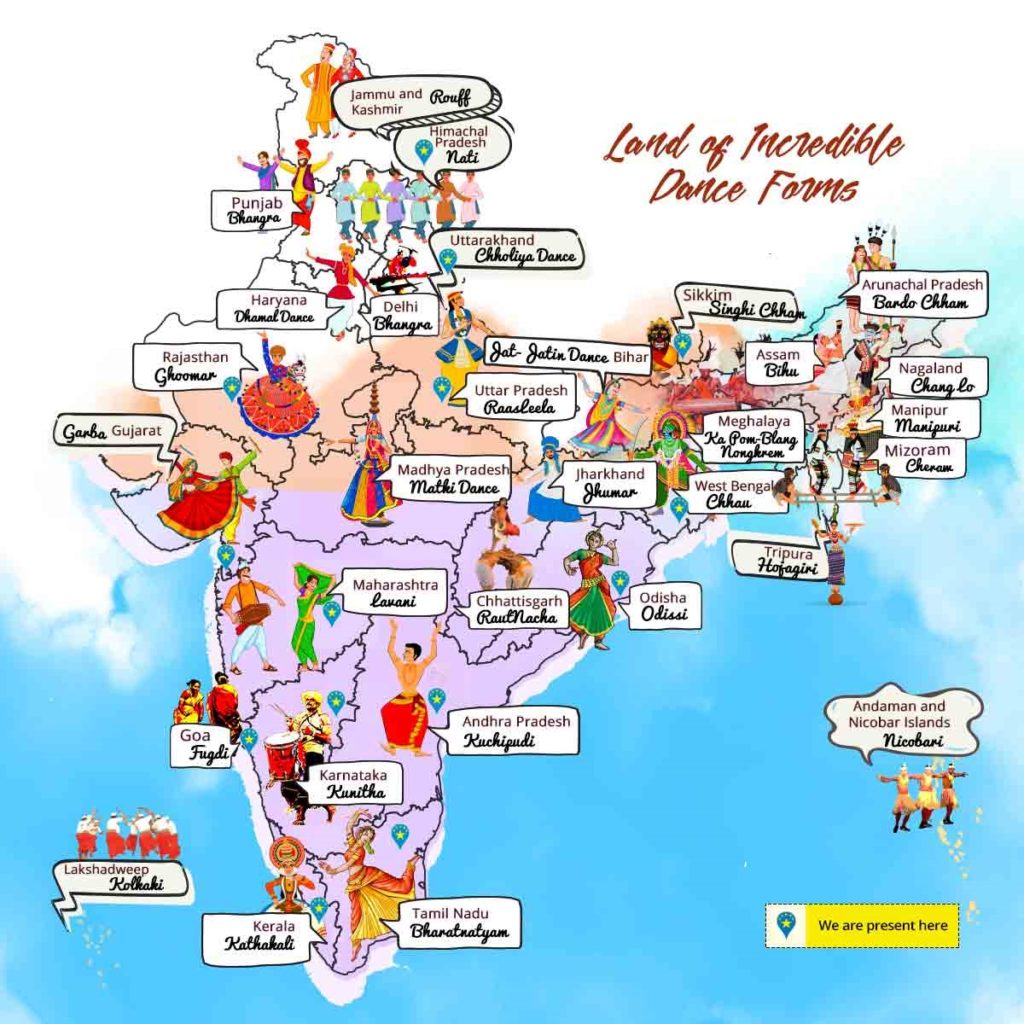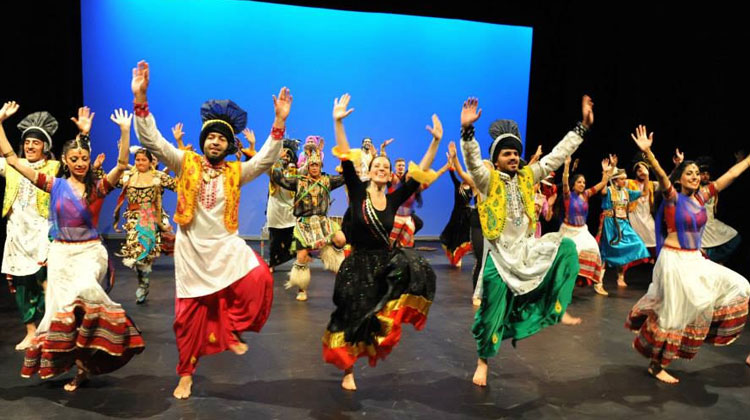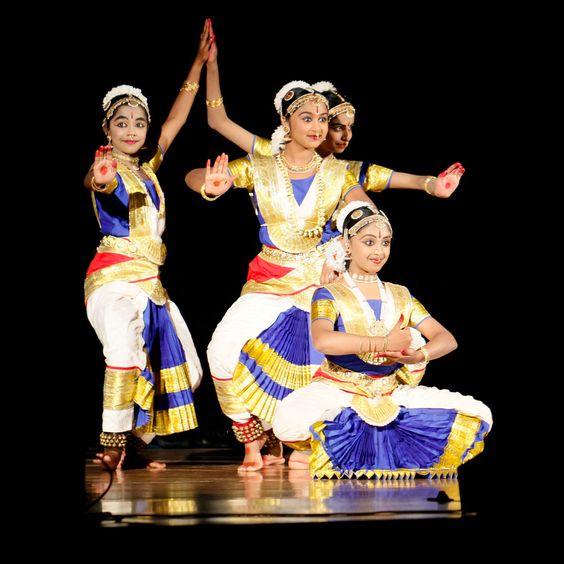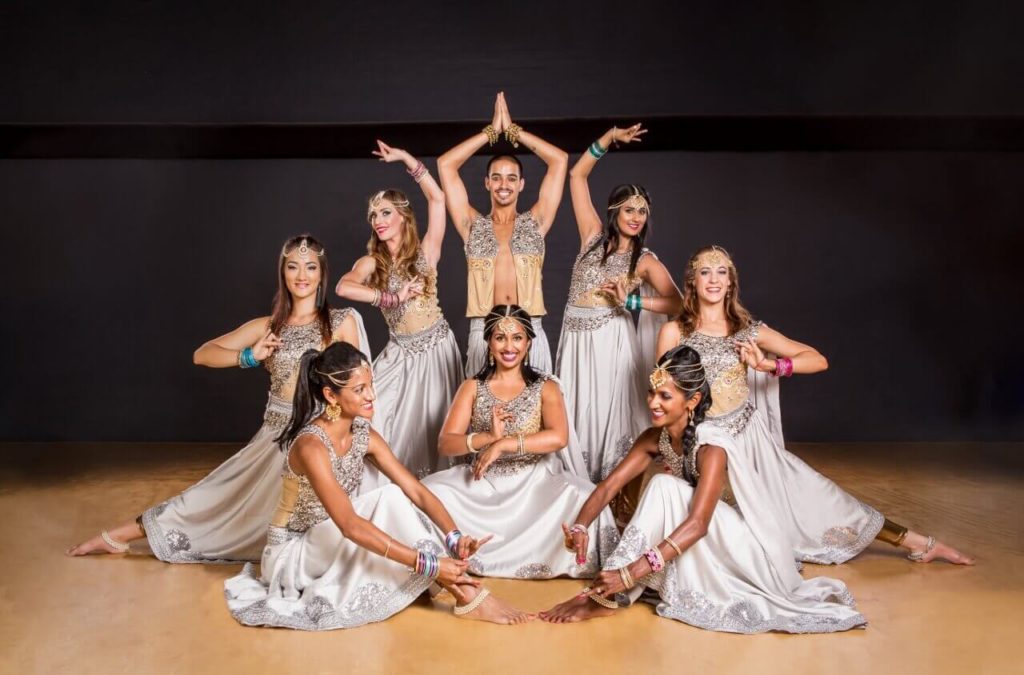POPULAR INDIAN DANCES IN MALAYSIA

- List of indian dance group in malaysia
- Indian traditional dance in malaysia
- Malay traditional dance in malaysia
- Malaysia famous dancer
- Chinese traditional dance in malaysia
- Indian dance class in selangor
- Traditional indian dance
- Indian wedding dj malaysia
Indian states and their Dance Forms
There are widely two types of dance forms – Classical and Folk dance in the Indian states.
The Indian Dance forms whose roots can be traced back to the Natya Shastra (Sanskrit textbook), in terms of practice belong to the classical segment. Indian Folk dances, however, are performed based on expression, joy, and occasion.
Classical Dances of India
1. Bharatnatyam (Tamil Nadu)
Rich in expressions (facial – eye and neck movements), hand movements (mudras), body movements (leg,hand) – one striking fact is that this dance was suppressed during the colonial time (British rule period).
This is a classical form of dance which was initially performed in the ancient temples as a devotion to God. It dates back to 1000BC, finding its roots in the Indian state of Tamil Nadu. It has been a tradition in Indian society and has a set of rhythms, rules, and style in itself.
2. Kathakali (Kerala)
Another classical dance form originating in Kerala years ago, it focuses mainly on “story-telling”- generally performing extracts from Mahabharata and Ramayana (the two epics in Indian History).
The dance form can be distinguished via its elaborate facial masks, costumes, makeup, and movements. The facial expression is extremely important in this dance form to showcase the fight between good and evil.
3. Kathak (Uttar Pradesh)
Originating in North India, this classical form consists of two types of Gharanas – Jaipur Gharana and Lucknow Gharana. The Lucknow Gharana displays the authenticity of courtesan’s dance form.
Wandering on story-lines, this dance was mainly performed for Nawabs in Lucknow. It is referred to as dance of love courtesy between Radha and Krishna. Kathak is the only classical dance form which matches its rhythmic to the Hindustani or North Indian music.
4. Odissi (Orissa)
Originating in East India (Orissa) this dance classical form finds its roots to its ancient temples and mythological stories, portraying Lord Shiva and Surya as well.
Performed on the classical music genre of Odramagadhi, it can be often found this dance form has its roots in Shaktism and Vaishnavism. With its vivid expressions, it is mostly a women-centric dance form ,males perform this as well.
5. Manipuri (North East)
This classical form specializes on “Rasleela” showcasing Krishna and Radha’s romantic encounters. Manipuri’s roots can be traced back to the state of Manipur (North-East), India. Manipuri, also called Jagoi, has different themes sometimes such as themes that are related to Shaivism and Shaktism.
The costumes they wear are extremely heavy and they have to dance with this challenge. It is a rather soft and elegant form of dance, displaying graceful measures through movements.
6. Mohiniyattam (Kerala)
The second most popular dance form in Kerala, this classical dance form narrates the tale of Mohini – the female avatar of Lord Krishna; it also showcases Tandava of Lord Shiva. This classical dance from the ancient Sanskrit text – Natya Shastra.
Performed as solo recitals by women, Mohiniyattam was traditionally an act of the temples with the theme of love forming its core. The dancers in contrast to Kathakali which also originates from Kerala, wear elegant white or off-white Kerala Kasavu saree with minimum jewelry.
7. Kuchipudi (Andhra Pradesh)
Speculated as the probable toughest form of dance, this was an ancient classical dance form previously performed by the Upper class Brahmin male dancers.
Kuchipudi showcases an entire process of dedicating the dance to the worship of God – lightening of the incense sticks, sprinkling holy water, and praying to God.
Kathakali originates from the tales of Ramayana and Lord Shiva. Kuchipudi has developed as a Hindu god Krishna-oriented Vaishnavism tradition.
7. Sattriya (Assam)
Introduced in the 15th century by the Vaishnava saint and reformer Mahapurusha Srimanti Sankerdeva, this dance form was previously performed by the male monks but over the years it has evolved and has been performed by females as well.
his dance form narrates the mythological incidents and teachings through a dance- drama set up.
Folk Dances of India
1. Bhangra (Punjab)
This folk dance, originating in the North-Indian state of Punjab, is generally performed during Vaishakhi (the harvest festival) in North India. It can be distinguished by its vivid colorful costumes and loud rhythmic beats with dhols and cloths tied at the wrists of the dancers.
2. Rouf (Kashmir)
Originating in the state of Jammu and Kashmir in the Muslim community, this folk dance is performed by female dancers on Kashmiri music. It is performed on the occasion to celebrate spring season using footwork known as Chakri, facing each other in two lines.
3. Bihu (Assam)
Although not a classical form of dance, this is a folk Indian dance form. Originating in Assam, this dance is performed during the harvest time of the year – marking springtime (Bihu period).
Displaying rhythmic motions, rapid hand movements, sways, and style – this dance form was performed at the London Olympics 2012. Both men and women perform this dance form to its rhythmic beats.
4. Chhau (Orissa)
Originating in Mayurbhanj, Orissa (East India) – this powerful dance form demonstrates the slaying of the demon via rigorous movements and breath-taking costumes. It is performed in the northern part of West Bengal as well, depicting Goddess Durga slaying the demon, signifying women-power.
Other dance forms of India
Other Dance forms of India include Lavni from Maharashtra (folk dance), Garba from Gujarat (folk dance) which showcases the rhythmic usage of sticks, Ghoomar from Rajasthan (folk dance).
Other dance forms of India
Other Dance forms of India include Lavni from Maharashtra (folk dance), Garba from Gujarat (folk dance) which showcases the rhythmic usage of sticks, Ghoomar from Rajasthan (folk dance).
| State | Folk Dances |
| Andhra Pradesh | Kuchipudi, Vilasini Natyam, Andhra Natyam, Bhamakalpam, Veeranatyam, Dappu, Tappeta Gullu, Lambadi, Dhimsa, Kolattam, Butta Bommalu. |
| Assam | Bihu, Bichhua, Natpuja, Maharas, Kaligopal, Bagurumba, Naga dance, Khel Gopal, Tabal Chongli, Canoe, Jhumura Hobjanai |
| Bihar | Jata-Jatin, Bakho-Bakhain, Panwariya, Sama Chakwa, Bidesia. |
| Gujarat | Garba, Dandiya Ras, Tippani Juriun, Bhavai. |
| Haryana | Jhumar, Phag, Daph, Dhamal, Loor, Gugga, Khor, Gagor. |
| Himachal Pradesh | Jhora, Jhali, Chharhi, Dhaman, Chhapeli, Mahasu, Nati, Dangi. |
| Jammu and Kashmir | Rauf, Hikat, Mandjas, Kud Dandi Nach, Damali. |
| Karnataka | Yakshagan, Huttari, Suggi, Kunitha, Karga, Lambi. |
| Kerala | Kathakali (Classical), Ottamthullal, Mohiniattam, Kaikottikali. |
| Maharashtra | Lavani, Nakata, Koli, Lezim, Gafa, Dahikala Dasavtar or Bohada. |
| Odisha | Odissi (Classical), Savari, Ghumara, Painka, Munari, Chhau. |
| West Bengal | Kathi, Gambhira, Dhali, Jatra, Baul, Marasia, Mahal, Keertan. |
| Punjab | Bhangra, Giddha, Daff, Dhaman, Bhand, Naqual. |
| Rajasthan | Ghumar, Chakri, Ganagor, Jhulan Leela, Jhuma, Suisini, Ghapal, Kalbeliya. |
| Tamil Nadu | Bharatanatyam, Kumi, Kolattam, Kavadi. |
| Uttar Pradesh | Nautanki, Raslila, Kajri, Jhora, Chappeli, Jaita. |
| Uttarakhand | Garhwali, Kumayuni, Kajari, Jhora, Raslila, Chappeli. |
| Goa | Tarangamel, Koli, Dekhni, Fugdi, Shigmo, Ghode, Modni, Samayi nrutya, Jagar, Ranmale, Gonph, Tonnya mell. |
| Madhya Pradesh | Jawara, Matki, Aada, Khada Nach, Phulpati, Grida Dance, Selalarki, Selabhadoni, Maanch. |
| Chhattisgarh | Gaur Maria, Panthi, Raut Nacha, Pandwani, Vedamati, Kapalik, Bharthari Charit, Chandaini. |
| Jharkhand | Alkap, Karma Munda, Agni, Jhumar, Janani Jhumar, Mardana Jhumar, Paika, Phagua,Hunta Dance, Mundari Dance, Sarhul, Barao, Jhitka, Danga, Domkach, Ghora Naach. |
| Arunachal Pradesh | Buiya, Chalo, Wancho, Pasi Kongki, Ponung, Popir, Bardo Chham. |
| Manipur | Dol Cholam, Thang Ta, Lai Haraoba, Pung Cholom, Khamba Thaibi, Nupa Dance, Raslila, Khubak Ishei, Lhou Sha. |
| Meghalaya | Ka Shad Suk Mynsiem, Nongkrem, Laho. |
| Mizoram | Cheraw Dance, Khuallam, Chailam, Sawlakin, Chawnglaizawn, Zangtalam, Par Lam, Sarlamkai/Solakia, Tlanglam. |
| Nagaland | Rangma, Bamboo Dance, Zeliang, Nsuirolians, Gethinglim, Temangnetin, Hetaleulee. |
| Tripura | Hojagiri. |
| Sikkim | Chu Faat Dance, Sikmari, Singhi Chaam or the Snow Lion Dance, Yak Chaam, Denzong Gnenha, Tashi Yangku Dance, Khukuri Naach, Chutkey Naach, Maruni Dance. |
| Lakshadeep | Lava, Kolkali, Parichakali. |
Conclusion
So finally we have seen Indian states and their Dance Forms. Along with the ancient temples of India, one can see beautiful postures carved on the pillars and bodies portraying movements of the dancers. Dance in India has always been more than just entertainment to its people.







